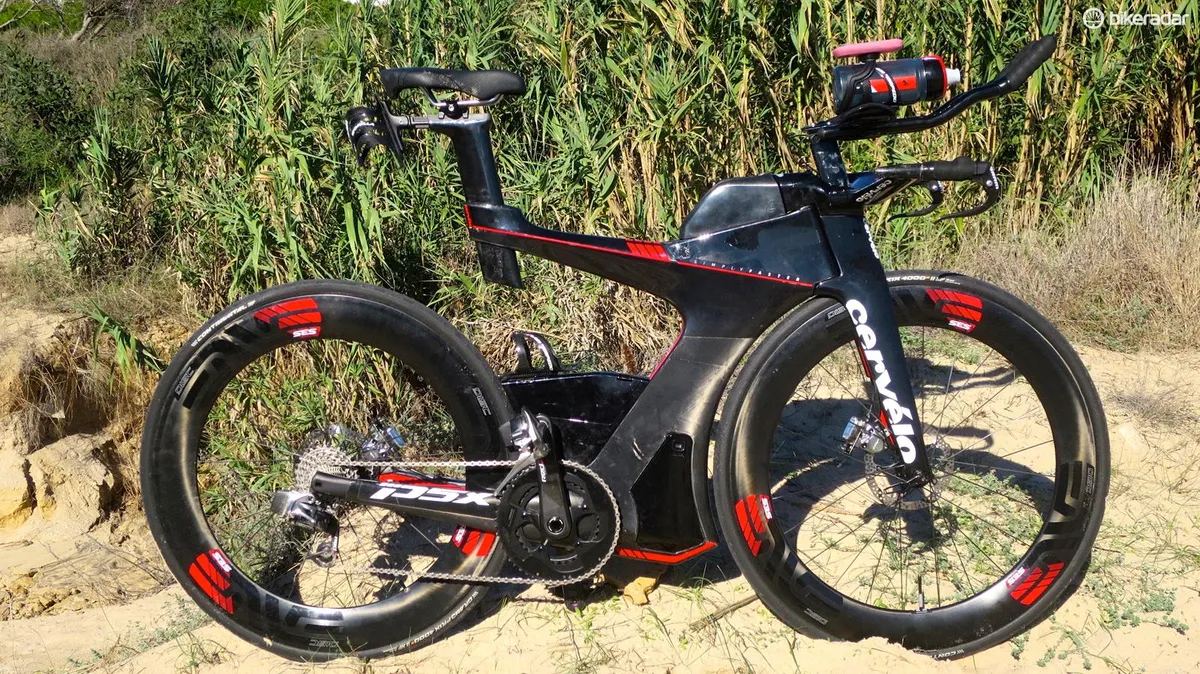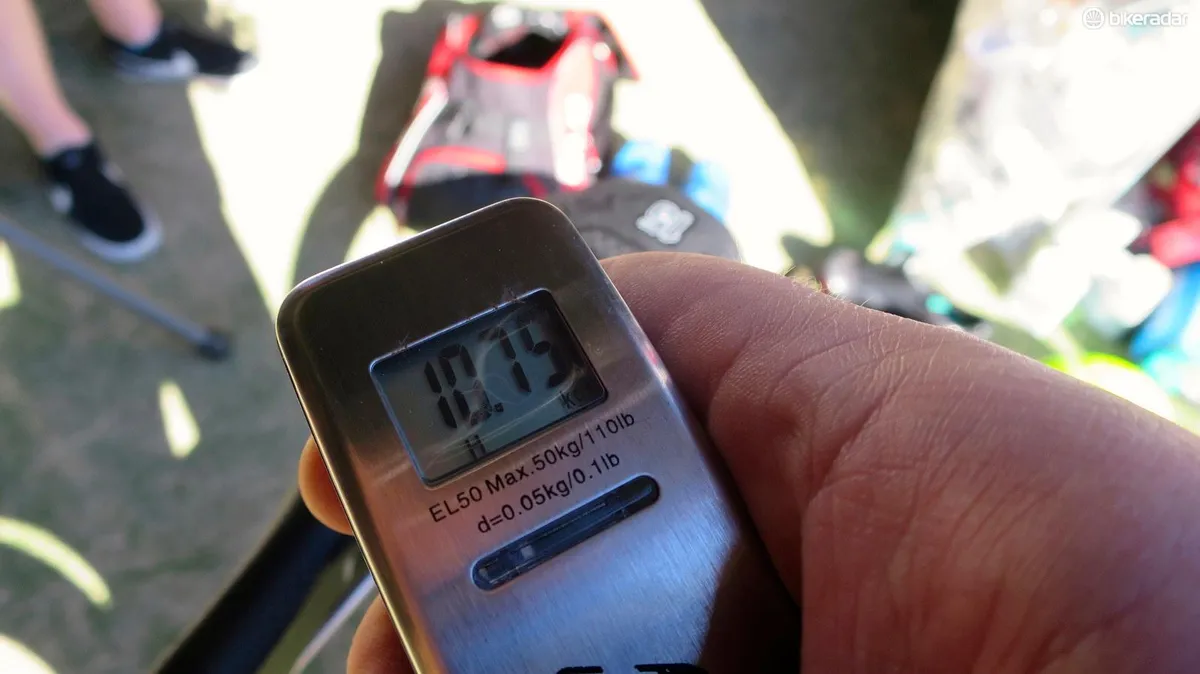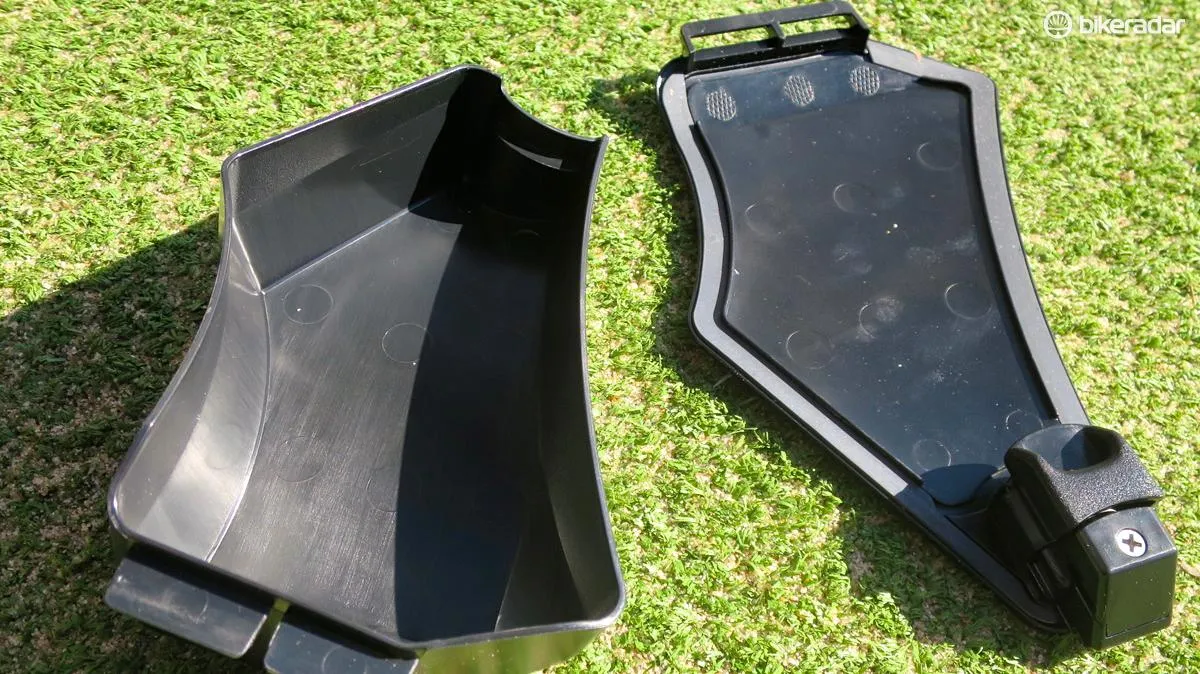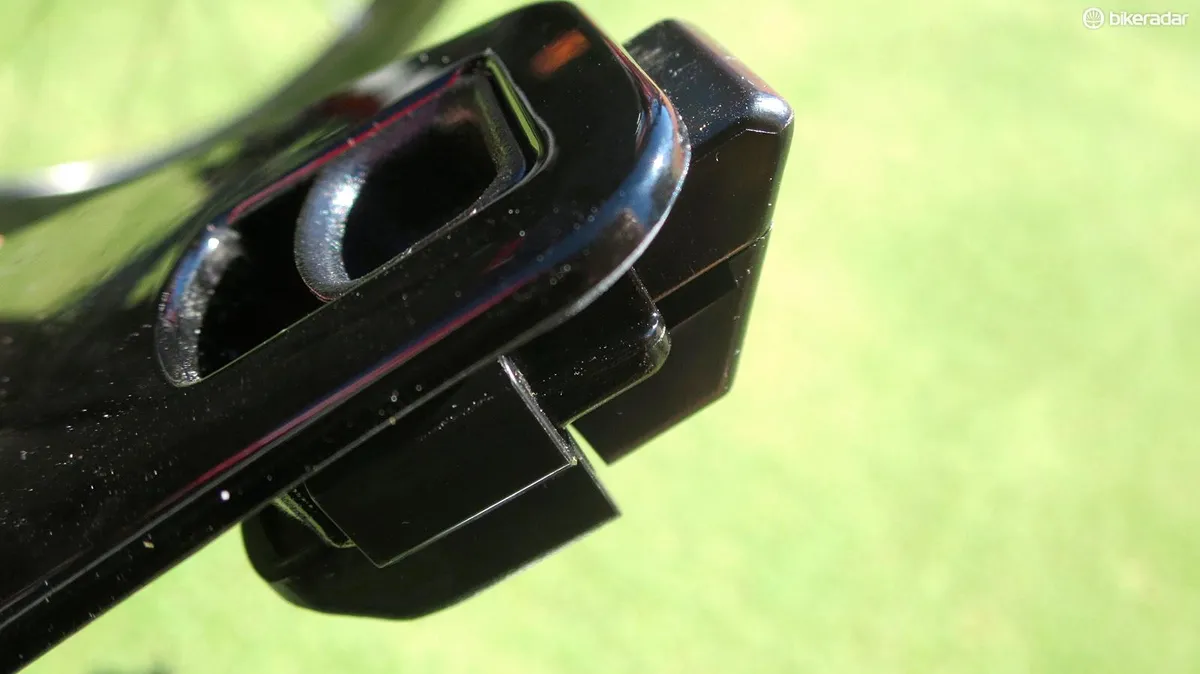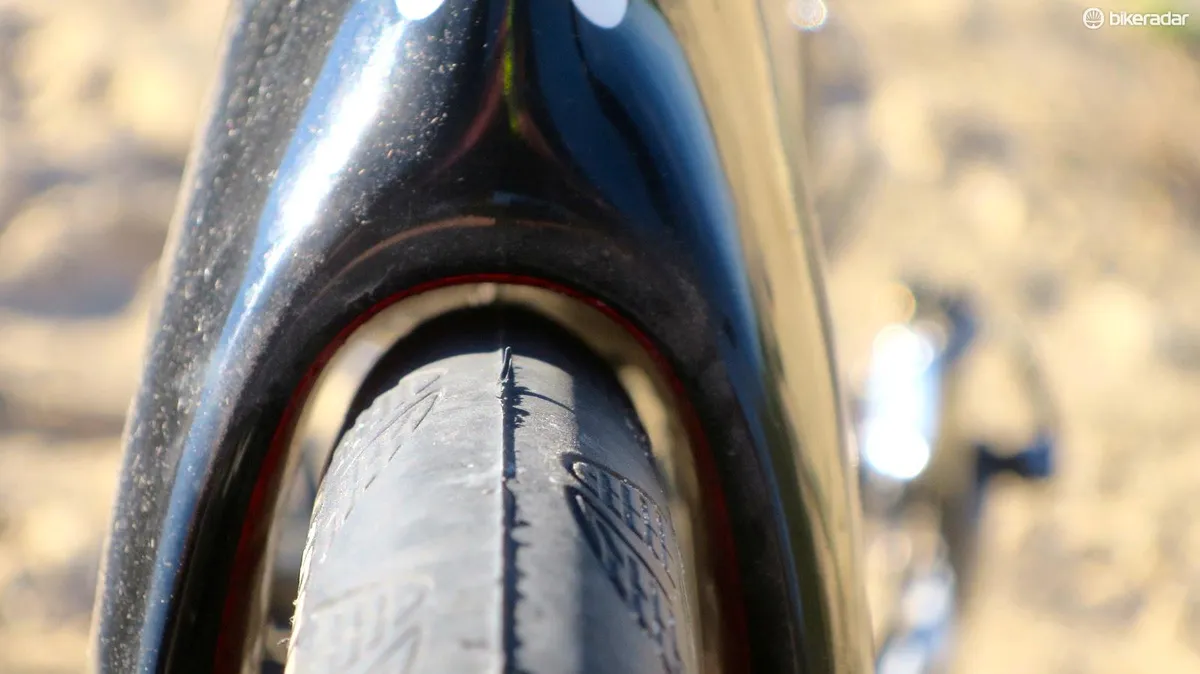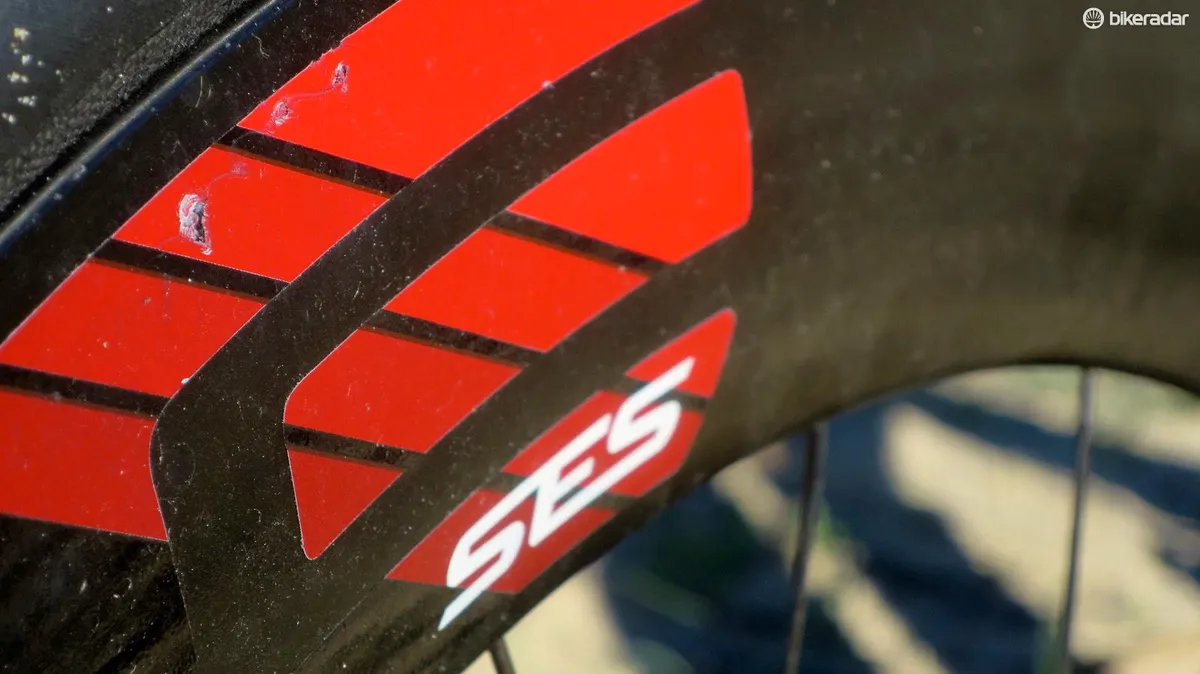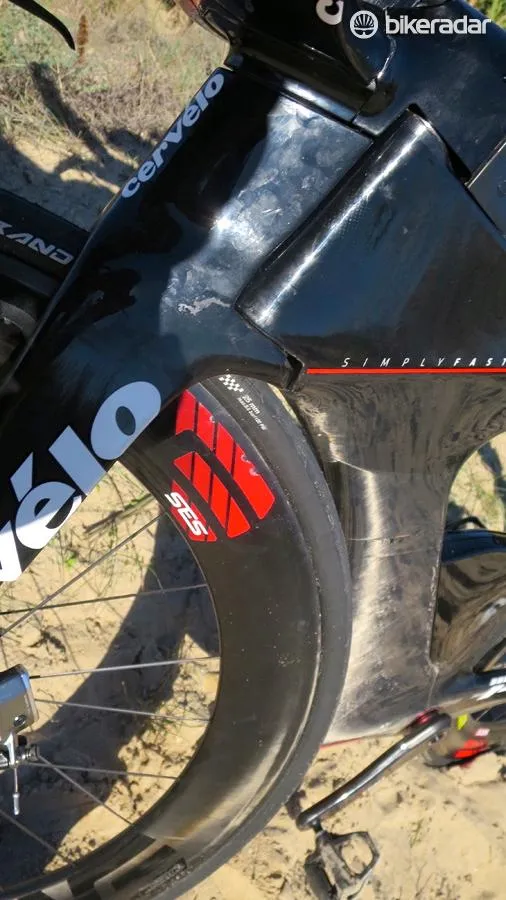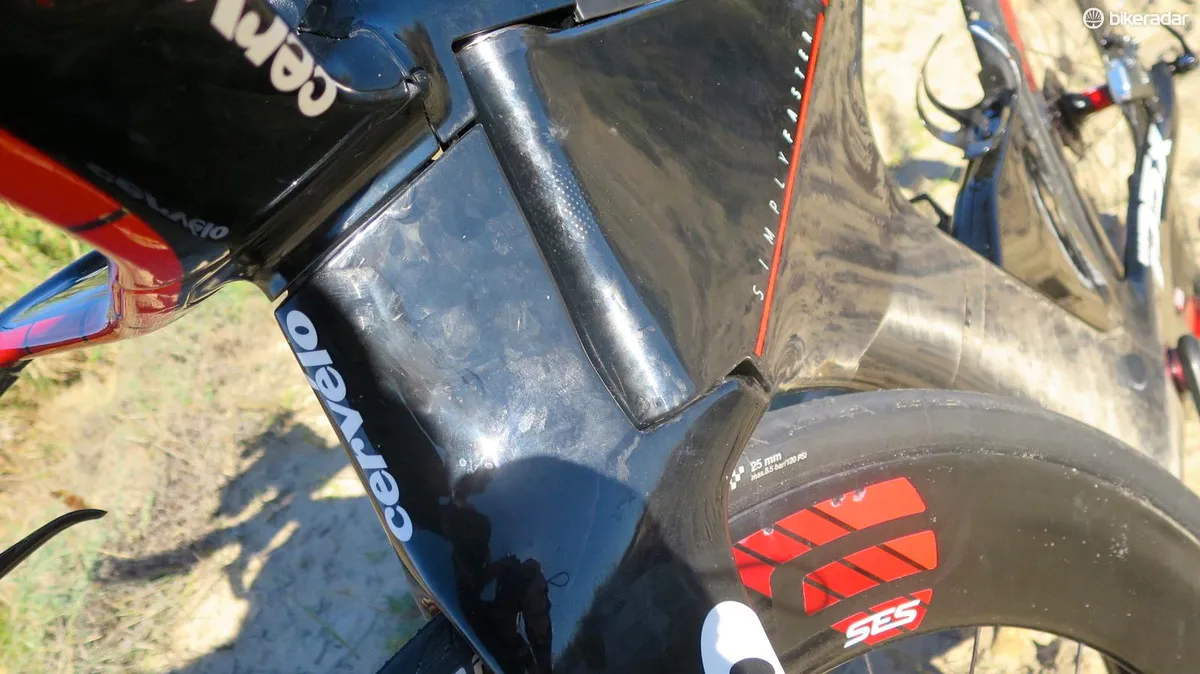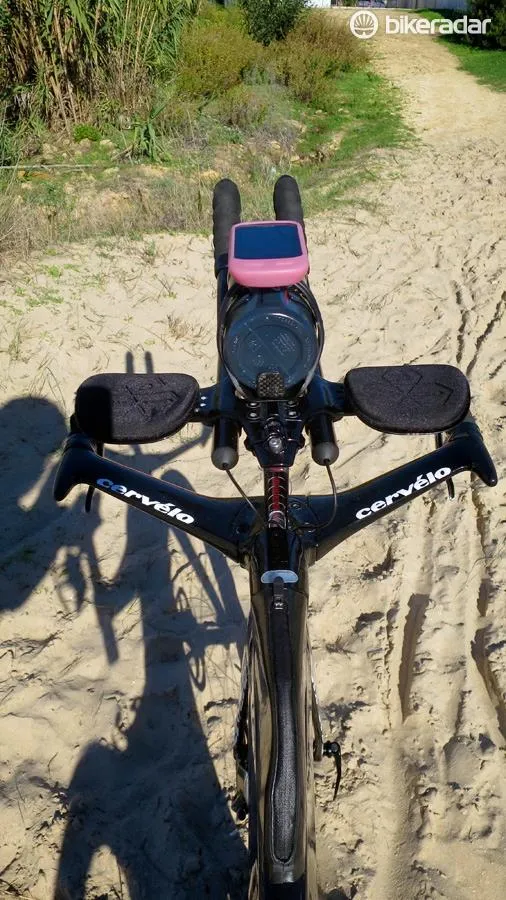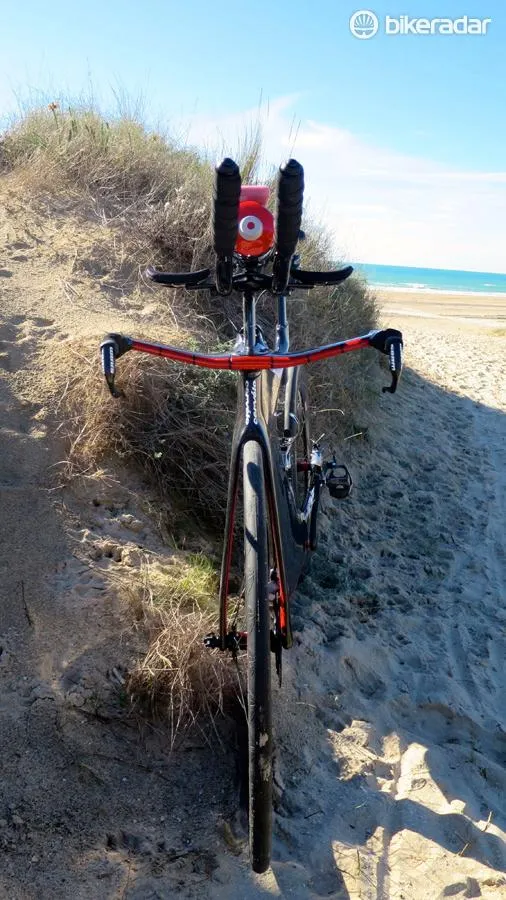The Cervélo P5X broke cover at this year’s Kona Ironman champs, and it’s fair to say the unusual-looking design has divided opinion. We’ve now had the chance to find out the reasoning behind this design, and what it means for the rider.
- Best aero road bikes of 2016
- Get into triathlon from cycling
- Cervélo's P5X explores a life without UCI limitations
Obviously, the P5X is all about aero, but the Cervélo design team wanted to take a more holistic approach so the bike would offer Watt savings as well as fitting triathletes’ specific needs. Key elements included consideration for water bottle placement, storage for spares and tools, and plenty of room for energy products, too.
Cervélo told BikeRadar: “We started with the P5 as a launch point, then to the P5Six with its hidden brakes. This started as a machine for both tri and TT so it had to comply with the rules.
“The other difference is between the disciplines: on a TT bike the bike is set up and then you ride 40km flat-out, full-blast and it’s done. With triathlon it’s further to ride, and most triathletes also travel a lot, so you have to be able to break the bike down and rebuild it consistently. So building, fitting and fixing has to be easier so you can concentrate on racing.”
The team at Cervélo distilled the data and came up with the following brief:
- Modular, integrated storage and easy access
- Compatible with round bottles
- Easy to fit the athlete to the bike
- Easy for the athlete to adjust the position even after initial set up (as riders evolve, and distances change, you may want to get to a more aggressive position for faster shorter events and on long distance you’ll want a more comfortable position)
- More aerodynamic than the P5 carrying the same items
- Same stiffness as the P5
- Easy and safe to pack
Bottle placement was worked out during physical testing — using gaffer tape and card — and riding, too. Cervélo tested on a 50/50 split group of male and female riders in Texas, where you can get some serious crosswinds. The design team arrived at mounting a bottle between the bars (using larger 750ml bottles throughout), a single bottle mounted behind the seat and one on the downtube (or horizontally if the storage box is fitted).
Hydration is a continuing theme up front. You can use an aero bottle should you wish, but the bike has been optimised for round bottles — and the aforementioned dual position on the down tube.
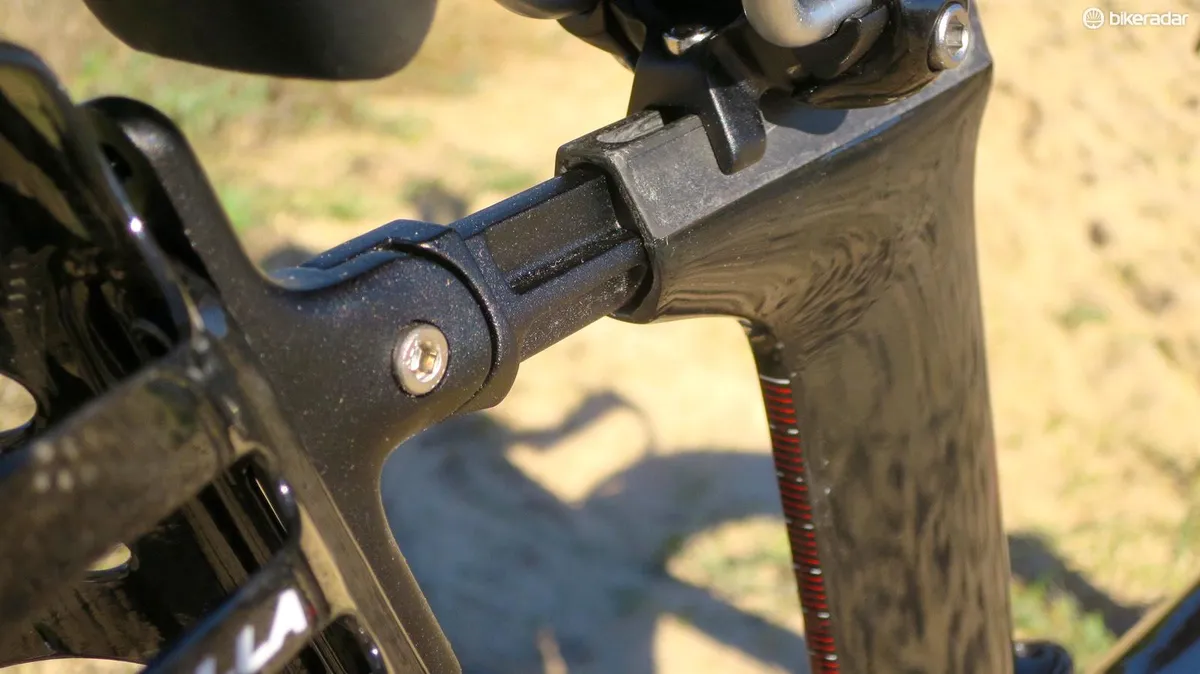
Out back, instead of using a standard rail-mounted bottle cage, Cervélo integrated it into the seat mast itself. This way the bike maker can offer lots of horizontal and angular position options to take into account both rider flexibility and saddle choice.
For storage, the bike comes with the smart pack which is mounted and integrated behind the stem (usually called a bento box). The significant difference here is that it’s part of the aerodynamic shaping of the bike, and not only sits above the top tube shape but also within the frame structure itself, making the storage capacity huge. We tried and successfully fitted five gels and an iPhone in there — the zip case top is water resistant, so no worries about damaging your phone when training in the rain.

At the back of the diagonal rubber top is a small self-contained tray with a curved lip (at the foot of the zip) to hold salt pills or other small items so they won’t get lost in the cavernous container. The sides of the bento box also have pockets on the sides.
Other in-frame storage solutions include the stealth box, which sits in front of the cranks. This hatch features an inner box that’s around 10”x5” and will take two C02 cartridges as well as a multi-tool, tyre levers and flat kits. The box is also big enough to take things like a gilet and arm warmers for winter training. The simple clip-activated cover features a foam rubber gasket seal around the edge of the door to prevent rattling when riding the bike.
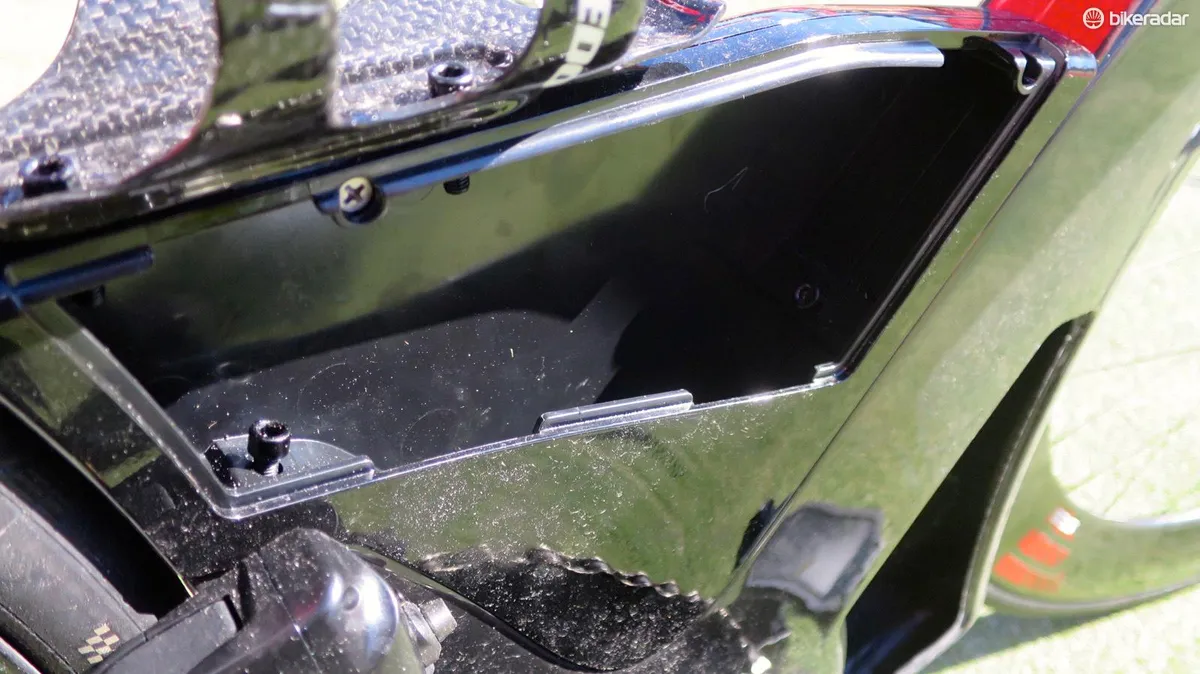
On the down tube there’s a second storage box called the speed box. This one sits above the bottom bracket and is removable. This is bigger than the stealth box; it’ll take a mini-pump and plenty more spares or clothing accessories you may want while training. Whether fitted or removed, the speed box has little effect on the overall aerodynamics — Cervélo measured it and found the difference so small as to be insignificant.
Why did Cervélo choose disc brakes?

Cervélo saw disc brakes as the natural partner for a bike designed to be your sole triathlon machine. Its research has shown that discs are better performers all round in every condition, especially with regards to modulation (the feel at the levers).
Cervélo regards disc braking as better, but the ‘accepted’ rules are that they aren’t when it comes to weight and aero. The company has no argument with weight, but it is set to release a white paper on aerodynamics where it believes it has shown that discs can have the advantage.
The secondary benefit of going to discs and thru-axles is an improvement in the bike’s overall stiffness and handling, with test riders reporting they felt more connected to the handling.

The only problem that Cervélo has is that it is a step ahead of the industry because no one has a full hydraulic TT set up yet. Cervélo has approached all of the groupset vendors (Magura, SRAM, Shimano) and all have hydro systems in the wings, but these aren’t available yet. So for now it has used the TRP Hy/Rd, which are cable operated hydraulics with the reservoir mounted at the caliper.
“It’ll become a running change as soon as new systems become available,” Cervélo tells us. “It may not be the ideal technical set up, but for the less technically able the Hy/Rds not requiring bleeding will be a boon.”
From a design point of view, Cervélo told us: “Far from restricting design, using discs frees your design. We don’t have to compromise the leading edges of the head tube and fork or build into the back a complex shape to integrate the brakes. The discs may not be as aero as a caliper [though that’s arguable]; they are in a much more turbulent area, so the minuses are less. Plus, if you adapt a bike from calipers to discs you’re at a disadvantage. The P5X was conceived for discs so we haven’t had to compromise.”
Mechanical rather than electronic shifting
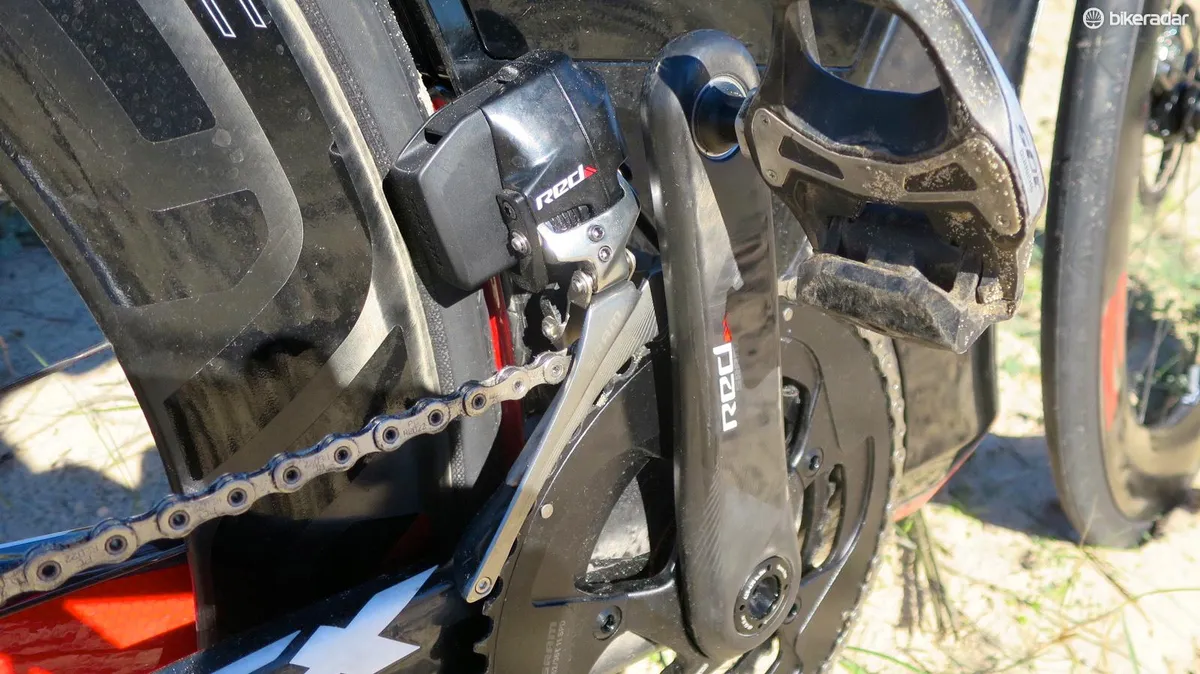
The frame shape with its massive down tube has the benefit of providing a very linear path for mechanical cable runs — meaning good quality mechanical shifting, but on a bike at this price you’d expect most to come with electronic drivetrains.
So Cervélo has designed a tool-free cover that sits above the stem where you can hide a Di2 junction box or SRAM’s TT-specific Blip-Box — complete with a window to see the battery indicator.
Cervélo learnt this from bitter experience; on the P5 the stem needs to be removed to access the junction box, and when one of their pro athletes had a rear mech Di2 failure her race was effectively over for the time it took to repair.
Packing up the Cervélo P5X

Up front, Cervélo looked to make the bar as easy to adjust as a seat post. To this end it designed a riser-post for the tri-bars, providing 112mm of stack adjustment. It also features marking graphics to make adjustments even easier.
By building the front end this way Cervélo eliminated the need to cut down the fork steerer, meaning you can change your position much more easily. As an aside it makes resale a little easier, though we’re sure Cervélo wouldn’t like to think about you selling it on anytime soon.

Packing is a big part of a triathlon bike, so Cervélo designed the front end for this purpose. The base bar itself interlocks and overlaps in two halves; for packing you can separate these two and fold them down to sit on the outside edges of the fork legs (sitting in a custom neoprene holster for safety and to stop you damaging the finish of bar or frame), minimising the front end and making it easier to pack safely.
To this end, Cervélo worked with fellow Canadian brand BiKnd, originators of the clever inflatable-sided bike bag. Based on the recently launched Helium 4 model for the P5X, the bag features an integrated frame that holds the chassis by its thru-axles, features compartments for the tri-bar extension assembly, and holds two sets of aero wheels in its flanks.

Also included in the bag is a dedicated P5X tool kit (basically two torque wrenches of 4mm and 5mm for every bolt on the bike), so you’ll have everything you need to hand when it comes to packing and unpacking.
The bag isn’t included in the price, but is available for an extra €899 / $TBC. Cervélo claims that the bag and bike can be disassembled and packed in less than fifteen minutes.
Cervélo P5X aerodynamics
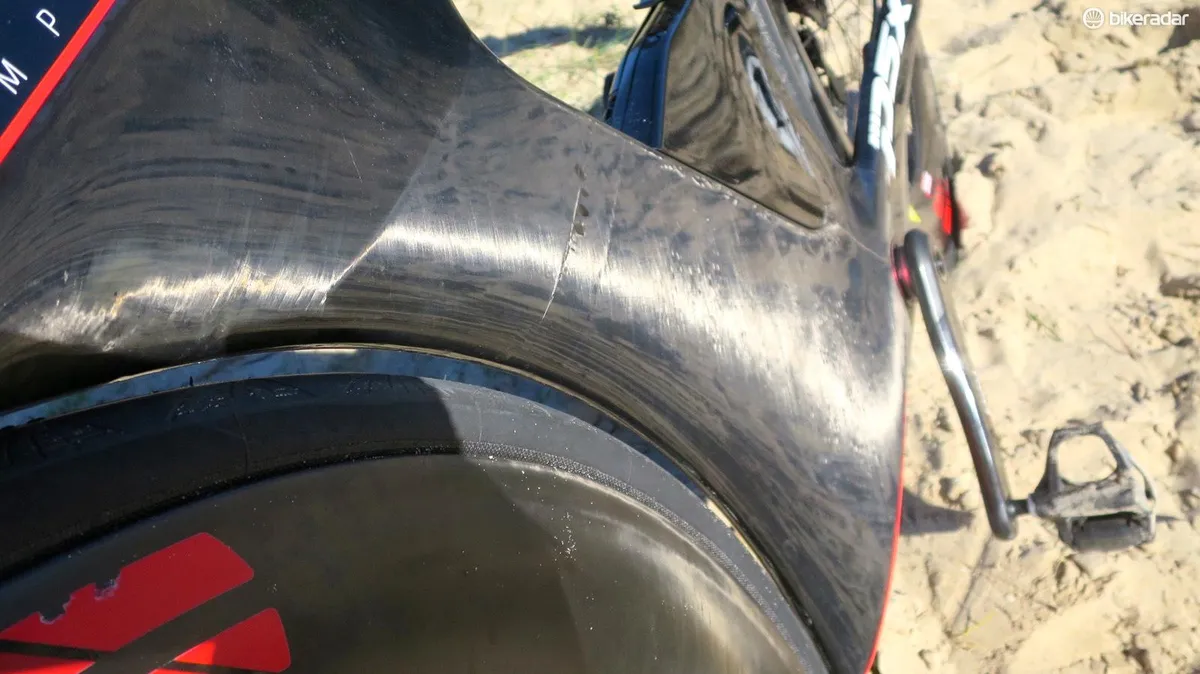
It may seem that aero is way down on the list of the P5X’s attributes after all the talk of usability, storage and packing, but Cervélo assures us it has pushed the boundaries further with countless hours of CFD (computational fluid dynamics) and over 180 hours of wind tunnel testing. The benchmark was the P5; all the data was recorded using Cervélo’s foam DZ (that’s a foam mannequin built from a cast of former pro racer David Zabriskie).
The San Diego wind tunnel hosted all of the testing, and Cervélo tells us: “We use the mannequin, as with a real rider you see variables up to 90g of drag even from the smallest physical movement. Once we’d got the design dialled we got David [Zabriskie] in on the bike to ensure we could replicate those figures”.
All of the testing was done with the frame loaded with the storage boxes and three round bottles to best replicate real-world usage — with the benchmark of a P5 carrying the same amount of equipment.
The P5X equipped with Ironman storage tested an average of 15 percent (30g) more efficient than the P5, but it seems Cervélo’s big draw is that the P5X performs this well even when loaded with spares and the nutrition needed for Ironman distances — and with the DZ dummy in place.

The speed box, mounted above the bottom bracket, does have an effect on the aerodynamics. Depending on the configuration (speed case in place and bottle behind the saddle) it contributes to a reduction in drag of 12g, whereas with a bottle mounted at the bars adds 5g.
With all bottles in place it also adds 5g (working on the assumption that 10g of drag is 1 Watt). With a single bottle mounted above the speed case it’s a 23g gain. Cervélo tells us this is to try to show that all these elements add or remove drag and all interact closely with each other.
To try to show that all these elements add or remove drag and all interact closely with each other, Cervelo says as a summary:
- Speedcase fitted — net aero: 0g drag
- Horizontal bottle in place — net aero: +23g drag
- Diagonal down tube bottle in place — net aero: +29g drag
- Bottle between extensions — net aero: +41g drag
- Rear bottle mounted — net aero: +5g drag
- Base bar up position — net aero: -15g drag
Where was the P5X made?

The P5X was made in North America with the frame manufactured by Minnesota-based HED Cycling — leveraging the company’s carbon capabilities and manufacturing processes. The fork and handlebar system is designed and developed by ENVE, and the P5X is painted and finished in Canada.
